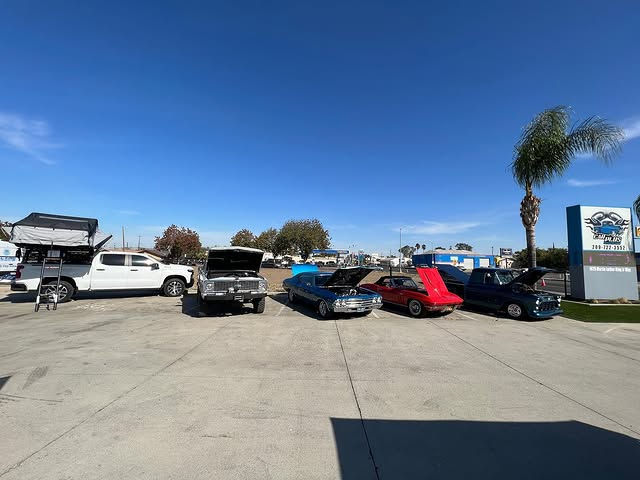Install a Car Amp Like a Pro
- Car Plus

- Oct 7
- 4 min read
If you want to enhance your vehicle’s sound system, installing a car amplifier is the ideal solution. It gives your music more power, clarity, and depth. But if you’ve never done it before, the process might seem tricky. Don’t worry. I’ll walk you through the entire car amplifier setup step by step. By the end, you’ll feel confident handling the installation yourself or knowing exactly what to expect when you get professional help.

Understanding Your Car Amplifier Setup
Before diving into the installation, it’s important to understand what a car amplifier does and how it fits into your sound system. A car amplifier takes the low-level audio signal from your car stereo (head unit) and amplifies it. This power then drives your speakers or subwoofers, making the sound louder and clearer.
Here’s what you need to know about the setup:
Power Source: The amp needs a direct connection to your car battery for power.
Ground Connection: A solid ground wire is crucial for preventing noise and interference.
Signal Input: The amp receives audio signals from your head unit via RCA cables or speaker-level inputs.
Speaker Output: The amplified signal goes to your speakers or subwoofers.
Choosing the right location for your amp is also key. Most people install it in the trunk or under a seat. Ensure it’s secure, well-ventilated, and protected from moisture.
Step-by-Step Car Amplifier Setup
Now, let’s get hands-on. Here’s a simple, clear process to install your car amplifier like a pro.
1. Gather Your Tools and Materials
You’ll need:
Amplifier wiring kit (power wire, ground wire, RCA cables, remote turn-on wire)
Wire strippers and crimpers
Screwdrivers and socket set
Electrical tape or heat shrink tubing
Fuse holder and fuse (usually included in wiring kits)
Zip ties for cable management
2. Disconnect the Battery
Safety first. Disconnect the negative terminal of your car battery to prevent any shorts or shocks during the installation process.
3. Run the Power Wire
Run the power wire from the battery to the amplifier location. Use a grommet to protect the wire as it passes through the firewall. Attach the fuse holder close to the battery (within 18 inches) to protect your wiring.
4. Connect the Ground Wire
Find a clean, unpainted metal surface near the amp for grounding. Use a ring terminal and secure it tightly. A poor ground can cause buzzing or interference.
5. Connect the Remote Turn-On Wire
This wire tells the amp to turn on when the stereo powers up. It usually connects to the head unit’s remote turn-on lead or the accessory power source.
6. Run RCA Cables and Speaker Wires
Run RCA cables from the head unit’s preamp outputs to the amplifier’s input. Keep these cables away from power lines to avoid noise interference. Connect speaker wires from the amp to your speakers or subwoofers.
7. Mount the Amplifier
Secure the amp in your chosen location. Ensure it’s stable and has sufficient airflow to prevent overheating.
8. Reconnect the Battery and Test
Reconnect the battery and turn on your stereo. Adjust the amp’s gain and crossover settings to match your speakers and preferences.
If you want to explore professional-grade accessories and kits for your setup, Stop By.

Can You Hook Up an Amp to a Factory Radio?
This is a common question. Many vehicles come with factory radios that don’t have dedicated preamp outputs. So, can you still add an amplifier?
The answer is yes, but it requires some extra steps:
Use a Line Output Converter (LOC): This device converts speaker-level signals from your factory radio into RCA-level signals that your amp can use.
Tap into Speaker Wires: Connect the LOC to the speaker wires located behind the radio.
Remote Turn-On Wire: You may need to find an accessory power source or use a remote turn-on adapter to power the amp.
Keep in mind that factory radios often have limited sound customization options. Adding an amp will improve volume and clarity, but for the best sound quality, upgrading the head unit is ideal.
If you’re unsure about your vehicle’s setup, professional advice or installation can save you time and headaches.
Tips for a Clean and Safe Installation
A neat installation isn’t just about looks. It helps prevent problems and makes future upgrades easier. Here are some tips:
Use zip ties to bundle wires and keep them away from moving parts.
Avoid running power and signal cables together to reduce interference.
Double-check all connections before powering up.
Use proper gauge wire based on your amplifier’s power requirements.
Keep the fuse close to the battery to protect your wiring.
Label wires if you plan to add more components later.
Taking your time and following these tips will pay off with a reliable, high-quality sound system.

Ready to Upgrade Your Sound?
Installing a car amplifier is a rewarding project. It transforms your driving experience with richer, louder, and clearer music. Whether you do it yourself or get professional help, understanding the process helps you make smart choices.
To explore the best products and expert services for your car amplifier setup, visit Car Plus. They specialize in car audio and motorsports restyling, offering top-notch accessories and installation support.
Get ready to enjoy your favorite tunes like never before!







Comments